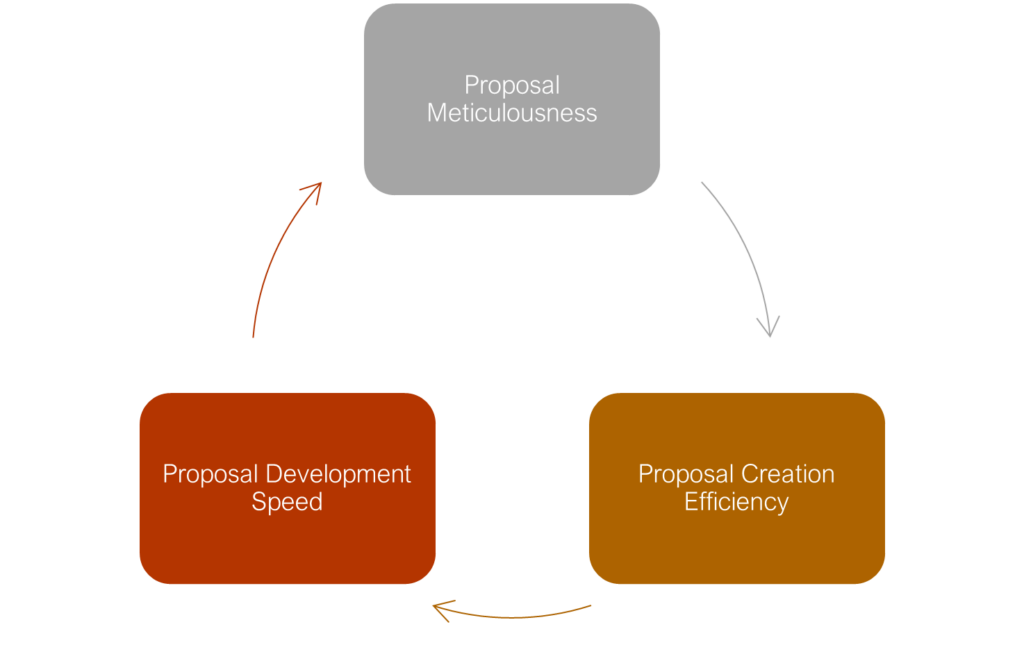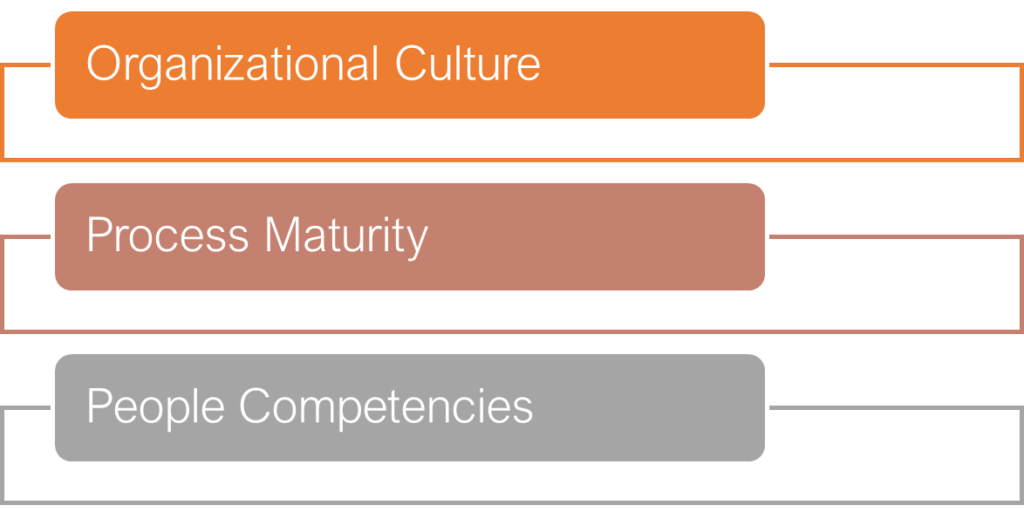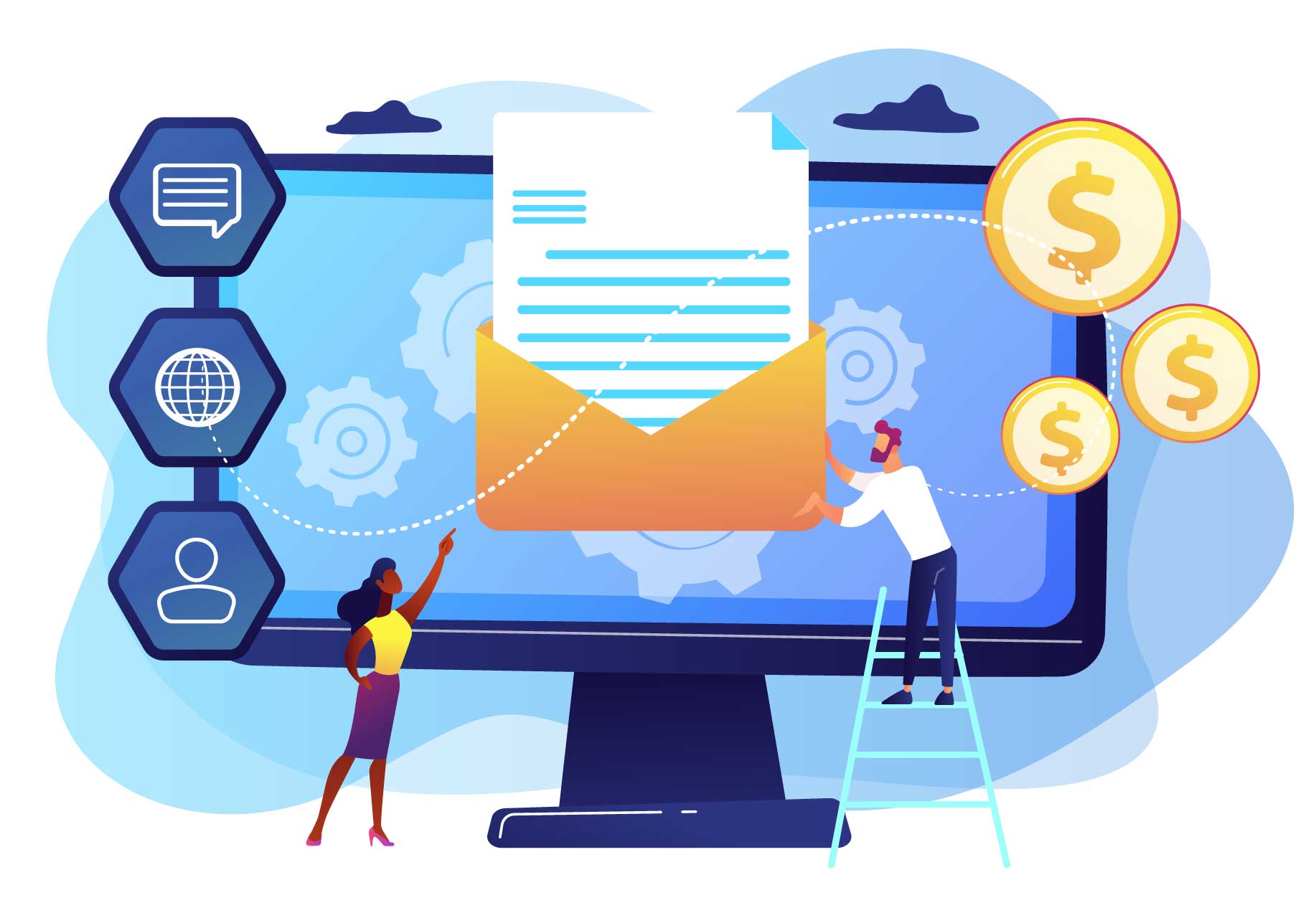Despite periods of slower growth due to various macro-economic factors, the global economy has grown (at constant prices) from USD 11.4 trillion in 1960 to about USD 86 trillion. With the shifts in technology, lifestyle, and urbanization, this growth is expected to continue. The growth of global business brings customers and manufacturers / service providers closer – and thereby stiff competition. With the scale and complexity of businesses getting very diverse, product / service providers must invest in robust proposal management software or proposal automation software.
While organizations continue develop proposals, their struggles center around –
- Proposal meticulousness
- Proposal creation efficiency
- Proposal development speed

Proposal Development Struggles
With the advancements in the world of software, there are numerous business proposal automation software – this is good news. The not-so-good-news is that organizations are now in a fix. More, the merrier – does not gel with proposal writing software.
As decision-makers, if you are keen to separate the wheat from the chaff, here is the ultimate guide to proposal management software.
Guiding Principle # 1 – Specific to industries!
Engineering. Automotive. Telecom. Pharma. Software Services. Consumer Durables. FMCG. Management Consulting. Infrastructure. Oil & Gas. Others.
When we review the above industries, the standout aspect is – diversity of industries. Would you sell the products and services from the above-mentioned industries the same way?
Absolutely not! The nature of the products and services and their life cycles are unique.
The proposal automation software must be specifically designed to the needs of the industry and its products and services. Exceptional business proposal automation software are based on this strategic design.
Guiding Principle # 2 – Aligned with organizational standards and processes.
Within the same industry, organizations work based on their standards, values, methodologies, processes, workflows, decision-points, forms, templates, checklists, etc. An organization’s ‘way of working’ is also influenced by:
- Process maturity
- Employee capabilities and competencies, and
- Culture

Factors influencing an organization’s way of working.
Most proposal management software provides lip service to this dimension. Unfortunately, RFP response automation software vendors rely on ‘exorbitant customization’ to align solutions to organizational standards and processes.
The chosen proposal automation software must be “configurable” swiftly to the organizational context.
Guiding Principle # 3 – Templatize proposal creation
Organizations pursue numerous RFPs (Request for Proposal), that are spread across the diversity spectrum of size, value, complexity, geographies, uncertainty, risks, and duration. In this backdrop, the meticulousness and granularity of the proposals vary significantly. Further, large proposals could run into hundreds of pages with numerous details embedded. Organizations struggle without standard ways to efficiently create proposals that are aligned appropriately – more importantly, they lead to significant negative impact on the business itself, not to speak of the management and leadership issues.
A top-class proposal management software must offer the twin advantages of –
- Templatize the proposal creation process based on diverse parameters as indicated above.
- RFP response automation via Proposal Writing Software or Proposal Builder capabilities.
Guiding Principle # 4 – Proposal scheduling and resource management.
It is not uncommon for organizations to pursue million-dollar proposals that go through multiple iterations with a dedicated team that works for weeks and months! When organizational resources come at a premium, it is important that the principles of scheduling and resource management are applied and closely monitored – after all, the resources and time translates to financial costs!
Proposal Management Software must be able to convert proposals into a ‘mini-project’ with capabilities of scheduling and resource management (planning, allocation, utilization, release, time & expense reporting, etc.). Doing so would equip decision-makers with insights related to the ‘cost of proposal management’ – thereby unearth inefficiencies and lower productivity!
Guiding Principle # 5 – Match the various types of contract.
Organizations undertake projects and programs based on different types of contract. The standard types of contract include –
- Fixed Price Contract
- Time & Material Contract (T&M)
- Cost Plus Contract
In addition to the above, it is common to observe engagements that cover multiple contract types based on nature of work packages in a project/program. Take the case of a project to deliver a product and offer support services. Here, the product could be fixed price, the support services could be T&M, while other overheads could be cost-plus.
A top-class proposal management software must enable the creation as well as tracking of projects and programs based on multiple contract types.
Guiding Principle # 6 – Transition from proposal to project delivery.
Most proposal automation software stops at proposal creation or may go a step further to contract creation. But the real action begins after the contract is signed when the project teams plan and deliver the project. Using ‘ordinary’ proposal management software, business leaders struggle to connect the dots from proposal or contract to project delivery – reviewing whether the project is being delivered in line with the proposal is a nightmare. It is very common to see conflicts between proposal teams and project teams about the costs and profitability of the engagement.
An ‘extraordinary’ proposal automation software seamlessly connects proposal to project delivery and delivers transparency of proposal costs & profits with project costs and profitability. Advanced business proposal automation software offers capabilities to define workflows to review and approve any changes to project costs and profitability. Both the proposal management and project management feel like a breeze to all the relevant stakeholders!
Guiding Principle # 7 – Integrate with other enterprise applications.
In today’s software world, invariably all organizations may have deployed enterprise applications such as SAP, Oracle, or a Legacy System. The biggest challenge happens to be data integrity as software applications operate disparately as islands. Imagine the quality of decision-making that is based on data that may be questionable!
A best-in-class proposal management software is designed for seamless integration with existing enterprise applications to offer ‘one version of truth’!
Let us summarize the guiding principles while investing in a proposal automation software.
- Specific to industries!
- Aligned with organizational standards and processes.
- Templatize proposal creation
- Proposal scheduling and resource management.
- Match the various types of contract.
- Transition from proposal to project delivery.
- Seamlessly integrate with other enterprise applications.





